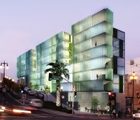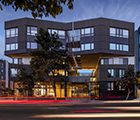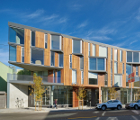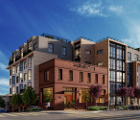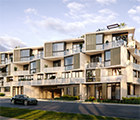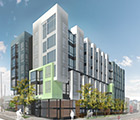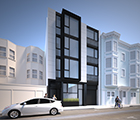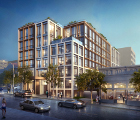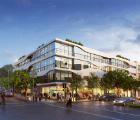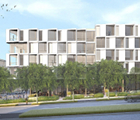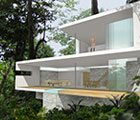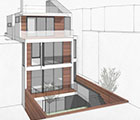The days when it was a raffish enclave far off the map - south of SoMA, and then some - are long gone.
The Dogpatch district now includes cocktail bars, artisanal crafts, and the Minnesota Street Project arts compound that debuted in 2016. A decade-long building boom has culminated in nearly a dozen new housing complexes since 2018.
The most recent changes offer a provocative case study in how neighborhoods can accommodate growth as they evolve. It helps that the architectural batting average for new buildings here is higher than average (no home runs, perhaps, but several solid doubles). More important, planners and residents have used the building boom to improve the public landscape, adding everything from mid-block alleys to a waterfront park.
The combination makes for a great excuse to explore a part of town you may or may not know. As these eight stops show, many of the recent changes are for the better — though there’s more that needs to be done.
If Dogpatch has a Main Street, it’s this amiable strip with the Dogpatch Saloon at one end, a Muni storage yard center at the other, and eclectic stops in-between that include a boba shop, a pottery gallery and Rickshaw Bagworks. Another slice of local flavor? The green makeover completed in 2018 that was funded in part by developer fees and includes pieces of the old sidewalk turned upright to keep dogs out of the large planter beds, bulb-outs paved with granite slabs that once were curbs, and buckeye trees that already are flourishing.
The best thing about this 100-unit condominium complex completed last fall is the “artwalk” that creates a pedestrian passage between Tennessee and Minnesota streets. Not in a perfunctory way, either; the design by Fletcher Studio, which also worked on 22nd Street, beckons you in with zig-zagging stacks of granite that provide seating, while illustrative panels by Hughen/Starkweather convey the neighborhood’s history with abstract artistry.
These student apartment buildings at 18th and Minnesota streets were designed by Philadelphia’s Kieran Timberlake for UCSF. The firm is no slouch — its work includes the U.S. Embassy in London — and this is serious architecture that includes walls of precast concrete that was molded to form thick horizontal ripples that double as sunscreens that help shade the naturally ventilated apartments. The deep bands also resemble furrowed brows — which is how I still look at the complex, two years after it opened
Even when Stanley Saitowitz’s buildings win architectural awards they can radiate an austere vibe. Not here: this modest shot of mid-block housing now under construction is a creamy delight with five stories of angled white bays that weave past each other above the sidewalk, casting unexpected shadows. There’s nothing like it in the neighborhood, and that is perfectly OK.
Ghosts of the past haunt this five-story condo complex — in a good way. The corner section of the site’s prior occupant, a brick structure from 1926, was preserved intact by the architects at BDE and then hollowed out to serve as an open-air plaza for public use. If you doubt me, read the sign on the outer wall by the entrance — and then take a seat on the long bench inside while enjoying a coffee or catching up on messages.
Woods Bagot architects and developer Align have crafted the rare Dogpatch addition that not only claims to honor the neighborhood’s industrial heritage, but makes you believe the hype with six muscular stories skinned in bronze-anodized aluminum that include pop-out window cubes. But the eye-catching element of the assertive show is the 5-story living wall by Habitat Horticulture; on a gusty day when the vines and fuchsia are rustling, the colorful swirls bring the whole block to life.
This small but handsome Mission-styled structure at 3rd and 20th streets opened in 1912 with a design by John Reid Jr., the city architect at the time. The police moved out decades ago and now it sits fenced-off and decaying, despite being owned by the city. Here’s an idea: turn it into a community center and neighborhood gathering spot.
Even in glum weather this 7-acre park along the bay at 19th Street is irresistible: there’s a snug sandy beach, lawns that beckon and a large bioswale that doubles as a rugged maze for small children. If you haven’t yet stopped by this naturalistic landscape designed by AECOM for the Port of San Francisco, you’re overdue.
As for that fenced-off parking lot and roadway next to the park, they’re part of the public improvements at Pier 70, a 66-acre former shipyard beginning to be transformed into offices, housing and waterfront parks. Dogpatch is now mostly built out — but San Francisco is a city that, though dense, keeps expanding before our eyes.
